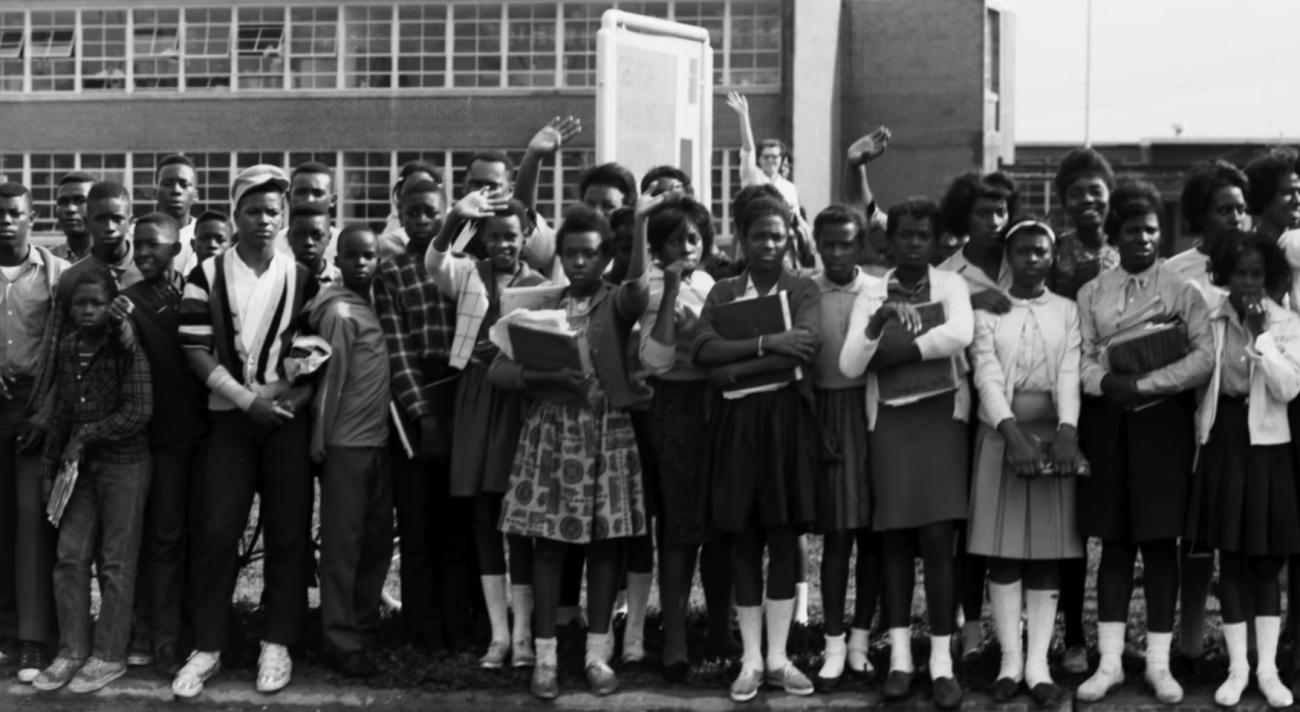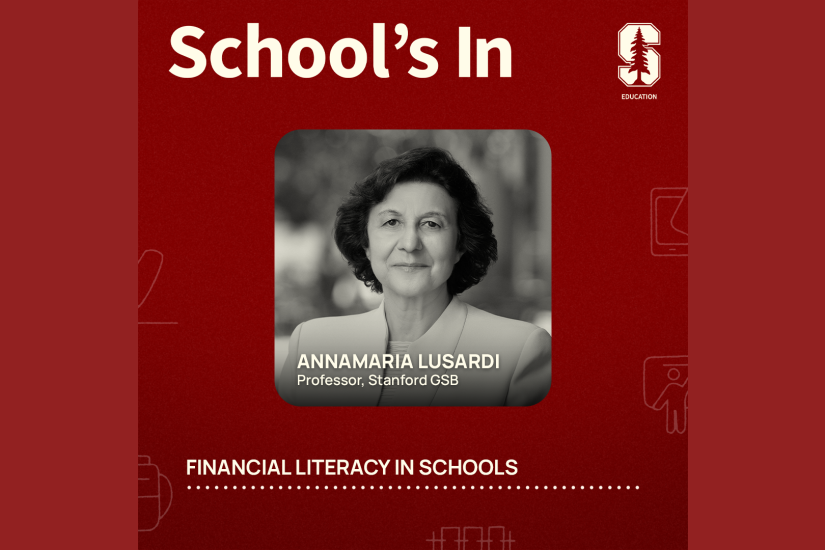
Stanford scholar uncovers an early activist’s fight to get Black history into schools
Amid an ongoing push to reform the way students learn Black history in U.S. schools, one woman’s experience from nearly 100 years ago has a lot to teach.
Madeline Morgan, an elementary school social studies teacher in Chicago in the 1930s, wanted to remedy the portrayal of Black history in textbooks of the time. So she created an addition to her standard curriculum, which put Black Americans at the center of the narrative and corrected a multitude of false depictions. In an extraordinary endorsement, her curriculum was adopted in 1942 by the Chicago Public Schools, then the second-largest school district in the United States. It went on to draw national attention and acclaim, and was requested by hundreds of school districts, parents, and civil rights organizations.
With that, Morgan successfully spearheaded “one of the most profound educational efforts of the war years,” said Michael Hines, an education historian and assistant professor at Stanford Graduate School of Education. But by 1950, her work was largely forgotten.
Hines investigates Morgan’s life and labor in a new book, A Worthy Piece of Work: The Untold Story of Madeline Morgan and the Fight for Black History in Schools. A former social studies and English teacher himself, Hines joined the GSE faculty in 2019, where he teaches courses on the history of education in the United States and the history of African American education.

"Teachers are really at the forefront of challenging the dominant narrative of American history," says Michael Hines, an assistant professor at Stanford Graduate School of Education. (Photo: Holly Hernandez)
Here, Hines talks about Morgan’s history-making achievement, the circumstances that made it possible, and what educators today can take from her experience in retelling the story of the United States.
What brought Madeline Morgan, a rank-and-file schoolteacher, to write and fight for such a groundbreaking curriculum at that point in time?
There was already a strong movement in the 1920s and 30s around Negro history, a wave of scholarship and activism that was largely precipitated by Carter G. Woodson, who founded the Association for the Study of Negro Life and History in 1915. What we now know as Black History Month grew out of an initiative that Woodson and the association launched in the 1920s: Negro History Week, a campaign to bring Black history into communities and classrooms.
Morgan’s work was part of that larger movement. She drew on resources from the association and from her many other networks. She was involved with the National Sorority of Phi Delta Kappa, a group of Black educators that began on the east coast and made its way to Chicago in 1931. She came from a vibrant Black community on Chicago’s South Side and drew from spaces like the George Cleveland Hall Branch of the Chicago Public Libraries, which opened in 1932 and had one of the biggest collections of material pertaining to African and African American history and culture at that time. Drawing on these resources meant that she was well equipped for the work she eventually did, and she believed knowledge was useful only if it was tied to social change.
What was the version of Black history that Morgan and others were trying to correct?
White-authored history textbooks were often filled with blatant anti-Black racism and cartoonish caricatures of Black life. For example, they painted Africa as a “dark continent” without advanced cultures, civilizations, or accomplishments.
In U.S. history texts, many offered sanitized, “mint julep” versions of slavery along the lines of Gone with the Wind, where references to the violence that defined the institution, its ties to American capitalism, and the centrality of slavery to the building of our nation were purposefully absent.
White textbook authors also misrepresented the period of Reconstruction after the Civil War, claiming that it was a failure because African Americans were not ready for freedom and political enfranchisement. And Black Americans in the present were depicted as a social problem instead of a people.
How did the account in Morgan’s curriculum differ?
Morgan’s curriculum directly addressed the falsehoods and absences she saw in the dominant narrative. Instead of papering over the violence of slavery, she describes the horrors of the Middle Passage, where the captains of slave ships regularly expected a large percentage of enslaved people to die on the route over. She also includes stories of slave revolts and African American resistance, as opposed to the portrayal in many white-authored textbooks of slaves being docile, compliant, or contented with their lot. Similarly, she includes accounts of African American abolitionists like Josiah Henson and Charles Redmond, not just white abolitionists like William Lloyd Garrison.
When she turns toward the present, she describes the massive gains that Black people made in education, institution building, and political organizing, and includes biographies of Black artists, doctors, poets, musicians, and others. Throughout the curriculum, Morgan is working to show Black Americans as historical actors in their own right, and she’s emphasizing Black accomplishment, intelligence, beauty, creativity, and industriousness as well.
What made Chicago school leaders receptive enough at the time to adopt Morgan’s curriculum?
Her work came at a particular moment in history, with the rise of fascism in Europe in the 1930s, when U.S. schools began drawing more attention to issues of ethnicity and identity. America’s entry into World War II was looming on the horizon. The country wanted to distance itself ideologically from the fascist pseudoscience and propaganda coming out of Europe. That gave rise to a movement known as intercultural or tolerance education, which was very much concerned with drawing a picture of America as a place where everyone comes together, and ultimately uniting Americans against the war effort.
The intercultural education movement happened to converge with the movement to get Black history into schools. A project like Morgan’s stood little chance of being adopted by a major school system like Chicago’s at that time. But suddenly, there was a convergence of interests, a moment where the window was open to make this happen.
But the school district effectively abandoned the curriculum after only a few years. What happened?
Nationally, by the late 1940s and early 50s, we see the rise of Cold War conservatism, which had a chilling effect on left-leaning curricular projects. People were afraid to be labeled a communist or un-American. The dynamics of postwar Chicago also changed: You had both Black and white servicemen returning from war and trying to reintegrate into society, there was increased competition for jobs and housing, increased racial friction and violence. These battles over race, space, and economic opportunity really tore at the fabric of the city during the late 1940s, and Morgan’s curriculum was a victim of that larger dynamic as well.
Given the ongoing challenges around how to teach Black history, what lessons do you think can be drawn from Morgan’s experience?
One thing that stands out to me about Morgan’s story is the power of teacher activism. She drew a lot of her strength from networks of other Black educators, and those networks are still very much with us and have probably only grown stronger with the advent of new technologies. Black and brown educators are finding ways to come together, ways to push back and to resist.
Teachers are really at the forefront of challenging the dominant narrative of American history. I hope Morgan’s experience lets them know they’re part of a much larger story, and maybe gives them the fuel to keep doing this work. Even though progress is fragile and not guaranteed, it is possible.
Another message for me is that we can’t expect change to happen if we’re just going to tinker around the margins. Morgan’s curriculum, although powerful, was positioned as something additional, so unfortunately it was more easily removed when the political and cultural winds shifted against it. Black history, women's history, the history of indigenous people and others – they’re still approached as add-ons to the curriculum in too many cases. Until we move those stories to the center of the curriculum, we're not going to see change, because it's too easy to undo.
Faculty mentioned in this article: Michael Hines



